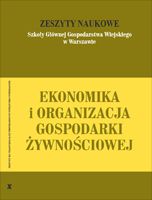Main Article Content
Article Details
Bask M., Luna de X. (2005): EMU and the stability and volatility of foreign exchange: Some empirical evidence. Chaos, Solitions and Fractals, vol. 25. (Crossref)
Campbell J., Lo A., Mackinlay A. (1997): The Econometrics of Financial Markets. Princeton University Press, Princeton (Crossref)
Charemza W.W., Deadman D.F. (1997): Nowa ekonometria. PWE, Warszawa.
Dornbusch R. (1976): Expectations and exchange rate dynamics. Journal of Political Economy, vol. 84. (Crossref)
Flood R., Rose A. (1995): Fixing the exchange rate regime: A virtual quest for fundamentals. Journal of Monetary Economics, vol. 36. (Crossref)
Furstenberg von G. (2001): Pressures for currency consolidation in insurance and finance. Are the currencies of financially small countries on the endangered list? Journal of Policy Modeling, vol. 23. (Crossref)
Grauwe de P., Grimaldi M. (2006): Exchange rate puzzles: A tale of switching attractors. European Economic Review, vol. 50. (Crossref)
James J. (2003): Simple trend-following strategies in currency trading. Quantitative Finance, vol. 3. (Crossref)
Kilian L., Taylor M. (2003): Why is it so difficult to beat the random walk forecast of exchange rates? Journal of International Economics, vol. 60. (Crossref)
Kusideł E. (2000): Modele wektorowo- autoregresyjne VAR. Metodologia i zastosowania. ABSOLWENT, Łódź.
Mills T.C. (1993): The econometric modelling of financial time series. Cambridge University Press, Cambridge.
Moshirian F. (2004): Elements of global financial stability. Journal of Multinational Financial Management, vol.14. (Crossref)
Mundell R. (2000): Currency Areas, Volatility and Intervention. Journal of Policy Modeling, vol. 22. (Crossref)
Mussa M. (2002): The euro versus the dollar: not a zero sum game. Journal of Policy Modeling, vol. 24. (Crossref)
Osińska M. (2006): Ekonometria finansowa. PWE, Warszawa.
Ravenna F. (2005): The European Monetary Union as a commitment device for new EU member states. Working Paper no. 516. European Central Bank, Frankfurt/Main. (Crossref)
Downloads
- Stanisław Gędek, Analysis of environmental policy effects on the farm level. Assessment of model approach , Zeszyty Naukowe SGGW - Ekonomika i Organizacja Gospodarki Żywnościowej: No. 37 (1999)





